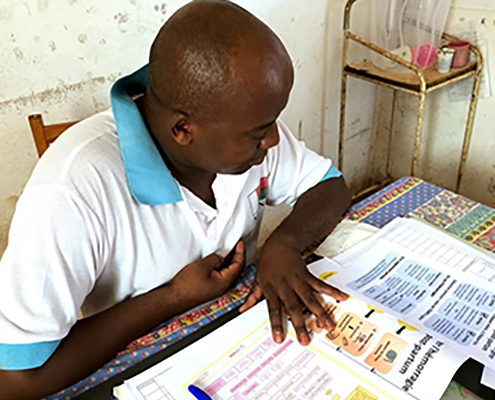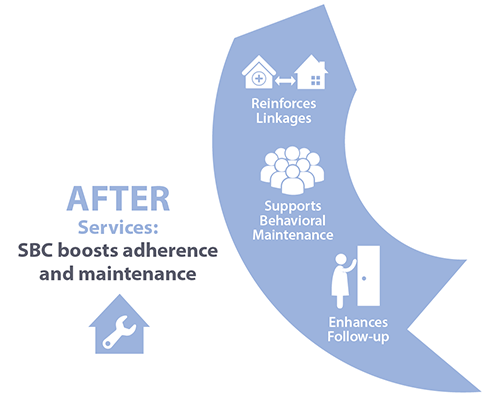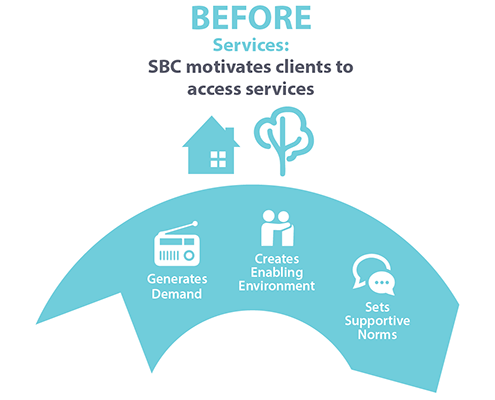
Advancing Postpartum Hemorrhage Care (APPHC)
Breakthrough RESEARCH English Madagascar, Malawi Maternal and Child Health, Provider Behavior Change Fact Sheet/Brief Breakthrough RESEARCHThese resources describe efforts to generate and test solutions that address key barriers to postpartum hemorrhage prevention, detection, and treatment.
 Lindsay Mgbor/Department for International Development (CC BY 2.0)
Lindsay Mgbor/Department for International Development (CC BY 2.0)Advancing Postpartum Hemorrhage Care Approach in Malawi
Breakthrough RESEARCH English Malawi Maternal and Child Health, Provider Behavior Change Case Study, Fact Sheet/Brief Breakthrough RESEARCHThese resources describe social and behavior change efforts to reduce maternal deaths from postpartum hemorrhage in Malawi.
 Richard Nyberg/Photoshare
Richard Nyberg/PhotoshareExamining Provider Behavior Change in Ouagadougou Partnership Countries
Breakthrough RESEARCH English Burkina Faso, Côte d’Ivoire, Francophone West Africa, Niger, Togo Family Planning / Reproductive Health, Provider Behavior Change Report Monitoring and Evaluation Breakthrough RESEARCHThis landscaping review summarizes evidence on the effectiveness of provider behavior change interventions for improving family planning services.
 Emmanuel Attramah/PMI Impact Malaria/Flickr
Emmanuel Attramah/PMI Impact Malaria/FlickrBlueprint for Applying Behavioral Insights to Malaria Service Delivery
Breakthrough ACTION English, French Malaria, Provider Behavior Change, Service Delivery Model/Framework Breakthrough ACTIONThis document seeks to bridge silos by outlining steps for approaching provider behavior change to facilitate coordination in malaria service delivery.
 Vespia, M., 2017
Vespia, M., 2017From Vision to Action: Guidance for Implementing the Circle of Care Model
Breakthrough ACTION English, French Provider Behavior Change, Service Delivery Implementation Guidance Breakthrough ACTIONThis resource provides guidance for implementing the Circle of Care Model and developing social and behavior change for service delivery initiatives.

Advancing Postpartum Hemorrhage Care Approach in Madagascar
Breakthrough RESEARCH English, French Madagascar Maternal and Child Health, Provider Behavior Change Fact Sheet/Brief, Peer-reviewed Breakthrough RESEARCHThe research briefs and a research article on this page describe the development of solutions to prevent, detect, and treat postpartum hemorrhage in Madagascar.

Circle of Care Model: After Stage
Breakthrough ACTION English Provider Behavior Change, Service Delivery Fact Sheet/Brief, Model/Framework Audience Segmentation Breakthrough ACTIONThis brief helps service providers understand how to use social and behavior change to encourage sustained healthy behaviors after service delivery.

Circle of Care Model: During Stage
Breakthrough ACTION English Provider Behavior Change, Service Delivery Fact Sheet/Brief, Model/Framework Audience Segmentation Breakthrough ACTIONThis brief helps service providers understand how social and behavior approaches can improve client–provider interaction.

Circle of Care Model: Before Stage
Breakthrough ACTION English Provider Behavior Change, Service Delivery Fact Sheet/Brief, Model/Framework Audience Segmentation Breakthrough ACTIONThis brief helps service providers understand how to use social and behavior change approaches to motivate clients to access the health services they need.

